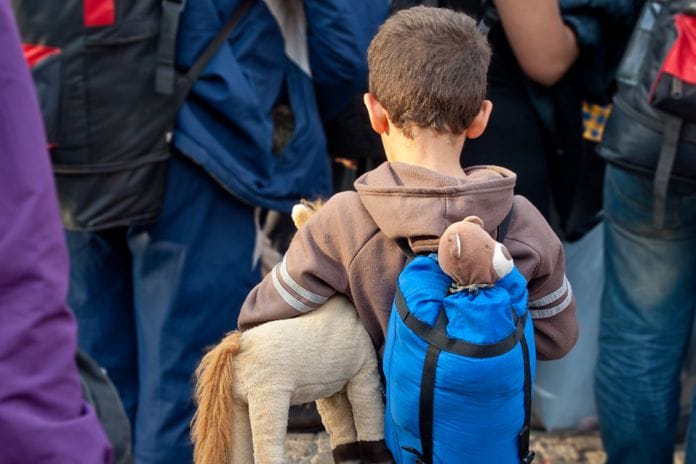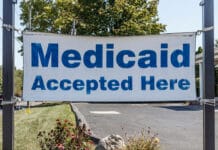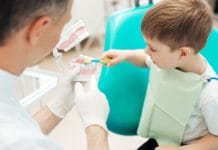The United States, throughout history, has been a refuge for those fleeing countries where the political climate or other circumstances has made living there unsafe. Although the United States’ current political climate is such that we are unsure just how many refugees will continue to be welcomed into our country, as dental professionals we must be aware of the unique challenges of this population in order to best meet their dental needs. The purpose of this article is to introduce the dental professional to refugee dental care and describe two agencies that assist refugees who resettle in the United States.
The International Organization for Migration (IOM) is the world leader in migration management. The IOM addresses the whole picture of migration throughout the world in addition to financially assisting, repatriating, or resettling refugees. According to the IOM, at the end of 2015, there were 21.3 million refugees worldwide1. Furthermore, between January 2011 and October 2015, 508,302 refugees were resettled by the IOM1. The United States alone resettled 273,429 persons from 2010-20142. While the IOM is an organization that assists refugees around the globe, when a refugee receives approval to relocate to the United States, a local chapter of an organization, such as World Relief, often steps in as the refugee begins their new life in the United States.
World Relief is one of many resettlement agencies that operate within the United States and contract with the state department to assist refugees in acclimating to their new surroundings. In fact, a World Relief volunteer is often the first point of contact for refugees when they arrive at the airport. Services provided by World Relief include initial resettlement services, which can consist of setting up a household, employment, and training services, English language classes, ongoing counseling, and advocacy services. In addition, they provide assistance with navigating the health care system to receive required medical screenings and vaccinations3. This is where a public health dental professional might make their first contact with a refugee client, as public health or community health agencies are often the providers who offer refugee health screenings.
What can dental providers do to make a difference in the lives of the refugees that they serve?
Dental professionals are in a unique position to make a difference in the lives of refugee clients. For many refugees, the care that we provide may be their first experience being cared for by a dental professional. There are many strategies we can employ to foster a successful visit.
Appropriate Translation Services
Agencies that accept public funding offer translation services to clients that require it (Federally Qualified Health Centers, Medicaid providers, other government-funded agencies). Dental professionals may need to translate all of the dental information in the native language of the refugee. Sometimes, the refugee may have a translator who comes to their appointment with them, but in my experience, this is often not the case. Over-the-phone (OPI) interpreter services are available for a fee from companies such as Global Interpreting. Once an account is established, dental professionals can dial in at any time for an interpreter, and over 200 languages are available. Examples of languages I have had assistance with include Albanian, Arabic, Burmese, Chin, Chin-Hakha, Farsi, Hakka-Chin, Karen, Nepali, Russian, Serbian, Teddim, Ukrainian, and Urdu.
When using OPI, the dental professional should face the refugee client and speak slowly and clearly with the interpreter on speakerphone. It is important to speak to the refugee directly (don’t look at the phone!) as you are trying to establish a rapport. Be sure to check for understanding throughout the conversation and give the refugee opportunities to ask questions. When interpretation is necessary for appointments, scheduling should allow additional time to complete the interpretation.
For refugees who speak some English, or have a relative or friend with them who may be able to interpret, it is important to ask them if it is permissible for you to phone the interpreter. You want to be sure they are comfortable, as I have often encountered refugees who understand English more than they can speak it and would rather try to understand and not involve the language interpretation service. It is important to respect their choice and be sure to document the details of the translation (or the refusal of translation services) at every appointment.
Finally, remember that spending the time successfully interpreting with your refugee client at the beginning of the dental care process will go a long way to preventing misunderstandings or compliance issues later in the treatment process.
Cultural Competence
Providing culturally competent dental care is another consideration when working with refugees. Dental professionals should become familiar with each refugees culture to ensure a successful visit. For example, if the refugee customarily removes their shoes automatically upon sitting in the dental chair, or if a female refugee cannot shake hands with a male dental professional, we should be aware of these customs so we can ensure the refugee’s comfort while in our care and continue to build a healthy rapport. A good place to begin for cultural competence continuing education is through the U. S. Department of Health and Human Services, Think Cultural Health Cultural Competency Program for Oral Health Providers.
Oral Hygiene Instructions
Due to the likelihood of a language barrier, the dental professional must remember to ask open-ended questions to determine the dental knowledge level of the refugee before recommending an oral hygiene routine. Refugee client’s dental knowledge, customs, and past use of dental hygiene aids may vary greatly depending on their country of origin. Dental professionals may encounter some refugee clients who have had regular dental care before coming to the U. S. In turn, you may encounter many who have never had dental care at all, and may have lived in refugee camps where there was no running water, thus having been unable to perform an oral hygiene routine.
In addition, transportation may be a challenge, as it takes time for new arrivals to obtain a drivers license and transportation. Refugee clients may need to rely on transportation from friends or a World Relief volunteer. Dental professionals must be sensitive to these possibilities and work with the refugee, and their support system, to ensure successful outcomes.
As of this writing, there is a humanitarian crisis going on in Myanmar that has spilled over the border into Bangladesh4. According to the IOM (2017), over 624,000 Rohingya have fled Myanmar’s Rakhine state since August 2017 due to violence4. IOM is actively assisting with shelter, food, and healthcare, to the Rohingya refugees in this area4. Recent reports indicate that the Myanmar and Bangladesh governments are coming to a repatriation agreement for the Rohingya to return to Myanmar5, however, it is unknown when repatriation could begin, and how many Rohingya would actually return to Myanmar.
While this article has just scratched the surface of the process refugees go through on their journey to resettlement, dental professionals should continue to educate themselves on best practices in working with this special population to ensure successful dental health outcomes for the refugees that will continue to resettle in the U.S and seek our care in the future.
Before you leave, check out the Today’s RDH self-study CE courses. All courses are peer-reviewed and non-sponsored to focus solely on high-quality education. Click here now.
Listen to the Today’s RDH Dental Hygiene Podcast Below:
NOW READ: Patients with Dental Phobias: How Do We Gain Trust?
RECOMMENDED: Dr. Esther Wilkins and a Century of Change
References
- Summary of IOM Statistics 2011-2015, Prepared by the Global Migration Data Analysis Centre (GMDAC), Berlin p. (1-19). Retrieved from https://gmdac.iom.int/summary-of-IOM-statistics-2011-2015
- 2015 Global Migration Trends Fact Sheet, Prepared by IOM’s Global Migration Data Analysis Center (GMDAC). p. 1-20. Retrieved from http://gmdac.iom.int/global-migration-trends-factsheet
- World Relief Refugee Services. Retrieved from https://worldreliefdupageaurora.org/refugee-services
- IOM Bangladesh: Rohingya Refugee Crisis Response. IOM External Update, Nov 30, 2017. Retrieved from https://www.iom.int/sites/default/files/situation_reports/file/IOM-Rohingya-Crisis-Response-Sitrep-30Nov2017.pdf
- The Wall Street Journal. Nov 23, 2017. Myanmar, Bangladesh Agree on Return of Rohingya Refugees. Ben Otto, Myo Myo.












